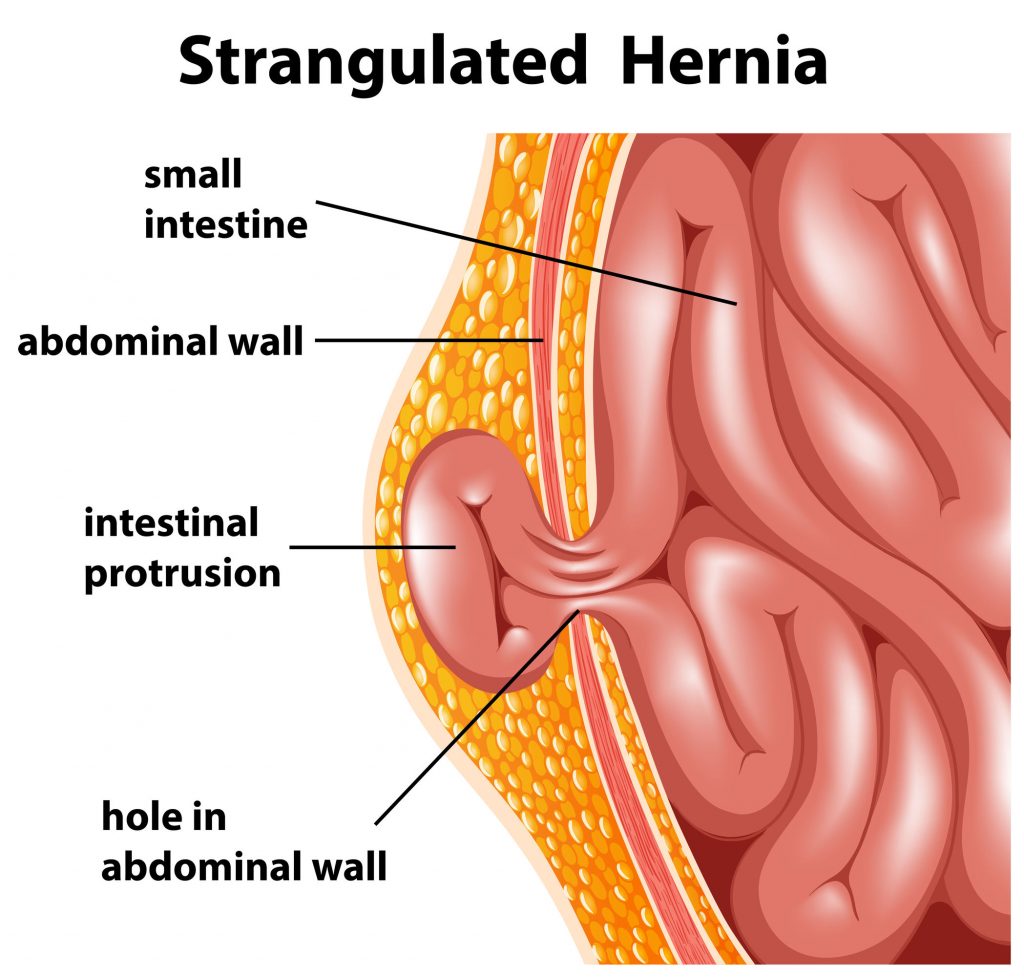
A hernia is a weak spot or hole in a muscle wall or tissue that allows an organ or internal part of the body to push through. Depending on where the hernia is located, it may produce a visible bulge.
Hernias can happen in many parts of the body, and to people of all ages from infants to the elderly. They are caused by weakness in the muscle or tissue combined with some type of strain. In some cases, when a hernia is left untreated, dangerous and life-threatening complications can develop.
Types of Hernias
There are many types of hernias and they can occur in different parts of the body:
- Inguinal – intestines protrude into the lower abdomen near the groin
- Femoral – fatty tissue or part of the bowel protrudes into the groin area
- Umbilical – part of the intestine bulge through the abdominal wall near the belly button, common in infants
- Hiatal – tops of the stomach bulges into the esophagus, can cause gastro esophageal reflux disease (GERD)
- Incisional – trough or near an incisional scar after abdominal surgery
- Epigastric – fatty tissue bulges through abdomen between the belly button and breastbone
- Spigelian – bowel protrudes through abdomen into the muscle below the belly button
- Diaphragmatic – abdominal muscles protrude into the chest through the diaphragm
- Muscle – part of a muscle bulges through its casing in the abdomen or leg
Causes of Hernia
Some hernias are congenital, meaning you are born with them. Many hernias are caused by strain on the body such as:
- Obesity
- Pregnancy
- Sudden weight gain
- Heavy or persistent coughing or sneezing
- Constipation
- Lifting heavy objects
